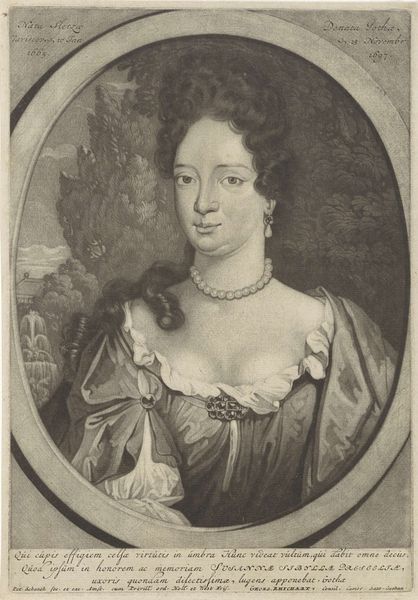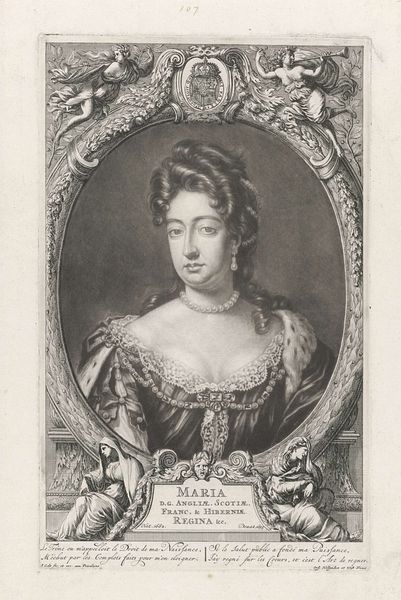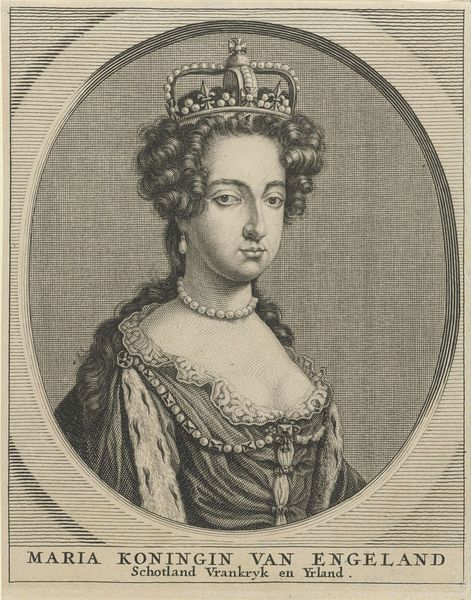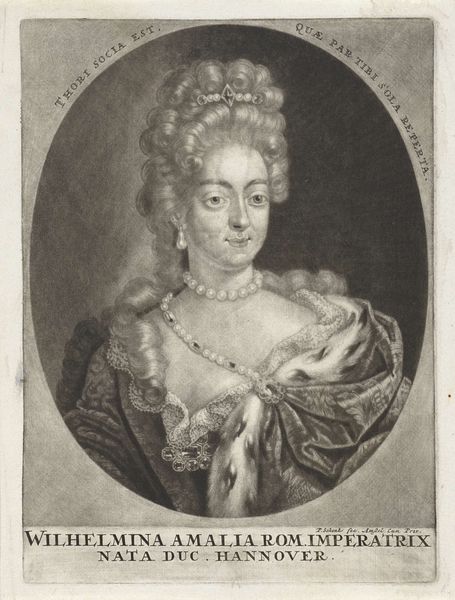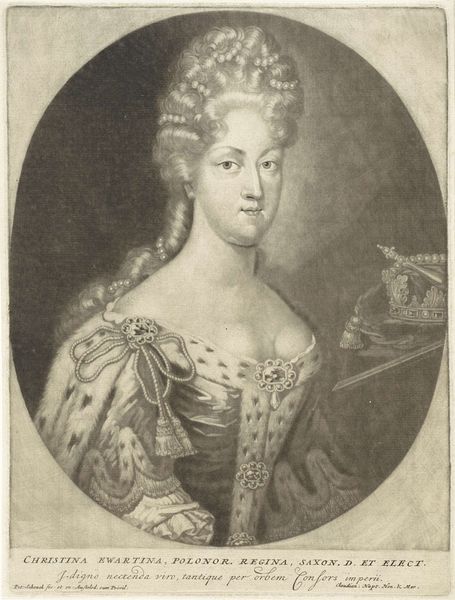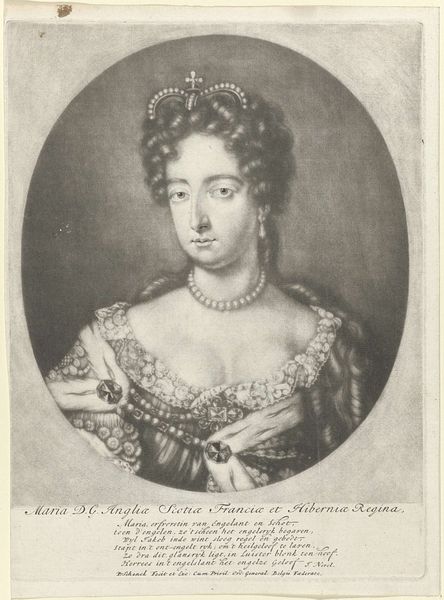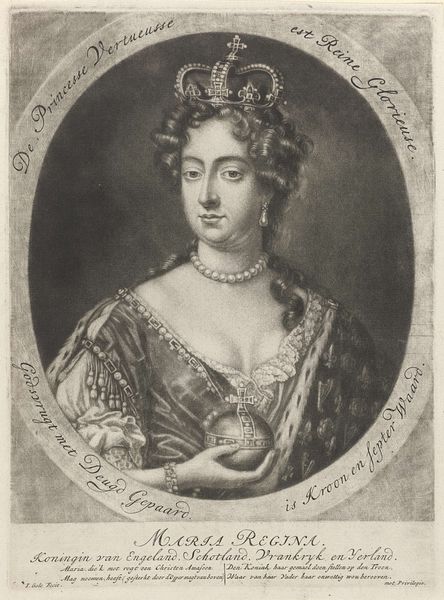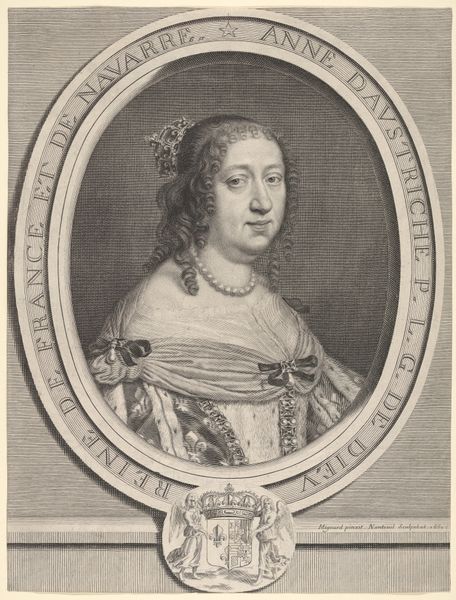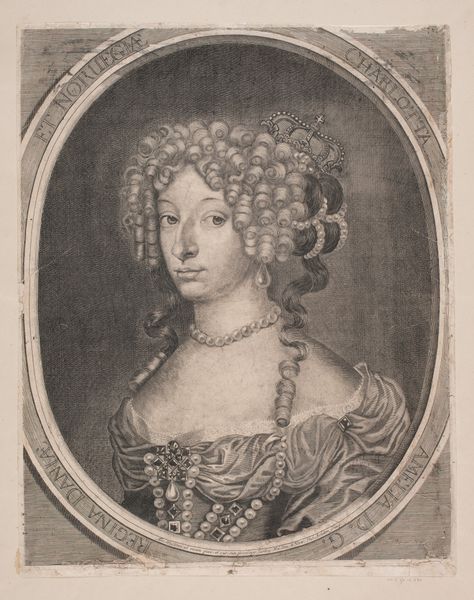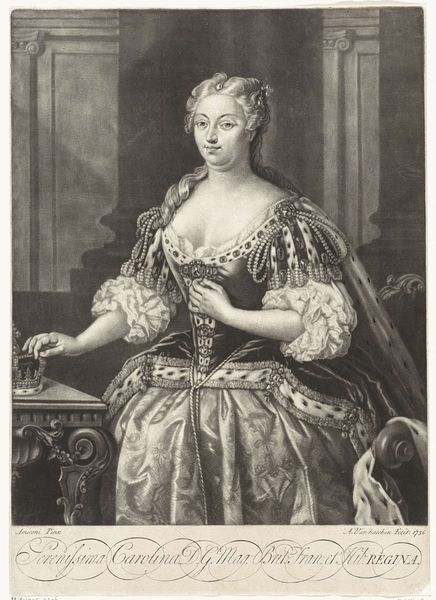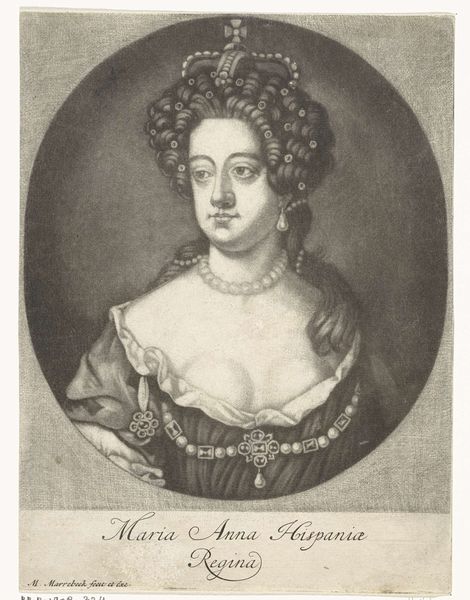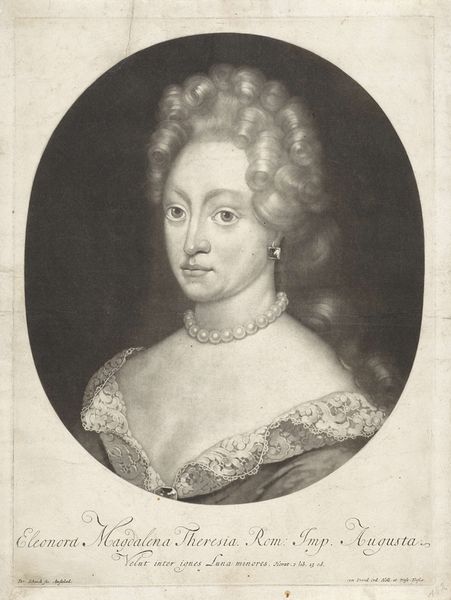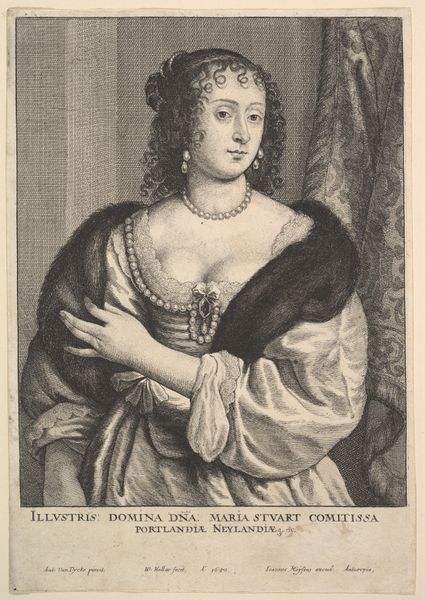
print, engraving
#
portrait
#
baroque
# print
#
history-painting
#
engraving
#
portrait art
Dimensions: height 668 mm, width 600 mm
Copyright: Rijks Museum: Open Domain
Curator: This is a portrait of Mary II Stuart, Queen of England, Scotland, and Ireland, created in 1694. Pieter van Gunst captured her likeness through engraving. What's your initial impression? Editor: There’s a formality to it, certainly, a restraint. Despite the rather low neckline of her dress and all the ornamentation, she seems quite guarded, even sad. Is that something of the political climate reflected in her face? Curator: Possibly. I see the ornamentation as an important reflection of her role. The baroque style itself is very telling. The heavy use of symbolic elements surrounding her – the crowns, the floral arrangements – frame her as a monarch, certainly. The iconography here creates a symbolic language, rooted in power. Editor: Right. Crowns aren't just decorative; they're visual shorthands for inherited authority. But does it transcend mere visual propaganda? I'm struck by the contrast between this idealized image and the very real pressures she would have faced as a female ruler during a turbulent period. Curator: Absolutely. Consider the gaze, though. She doesn’t quite meet our eyes; it’s a reserved, regal detachment. Think of the visual traditions from which this springs: the iconographic distance meant to elevate royalty beyond the realm of commoners. And I am drawn to the garlands--floral tributes entwined with representations of power, simultaneously beautiful and authoritative. Editor: But it’s interesting how printmaking democratizes access. Though meant for circulation among the elite, a print is more accessible than a unique painted portrait. Did that ease of distribution change how royal image was perceived at the time? And beyond just her sovereignty, it would be important to acknowledge how the circumstances surrounding her rise to the throne affected Anglo-Irish, and colonial-American histories. Curator: I agree that the reproductive quality shifts things. This allowed the dissemination of a carefully cultivated image. A printed portrait became a kind of political tool in itself. Consider its legacy: it offered a certain visibility across great expanses during colonial times and beyond. Editor: It makes you wonder about the many viewers throughout time who have come to interpret this same portrait, how many diverse ideas and feelings that static image might trigger. It is far more than just royal representation—it stands as an icon in the collective consciousness of multiple continents. Curator: Agreed, it is more than what it seems on the surface. The layered symbolism coupled with her individual presentation offer a fascinating window into an era, the life of a leader, and indeed the cultural impact across multiple continents.
Comments
No comments
Be the first to comment and join the conversation on the ultimate creative platform.
